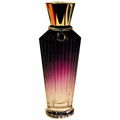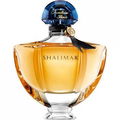The comments and statements here agree that this is a good scent. Most people find it difficult and exhausting. Almost all of them attest it a very good durability and projection. A certain special position is taken by the esteemed Terra, who doesn't give any points (so we don't know what he thinks about the power and aura of the fragrance) and who divides up what pretty much everyone else finds: in the first phase the fragrance is the extremely hard to digest, experimental work of a lunatic, in the second phase very beautiful.
In my perception I am a bit cross to the majority, which is why I would like to emphasize that my olfactory system is working normally (unfortunately it is not as fine as it should be, but at the moment it is as usual, especially no corona-induced temporary anosmia) and that the source is beyond any doubt (original test by the company). Today I first applied a normal dosage and then sprayed twice more in the course of an hour, because I smelled almost nothing. Nevertheless, the scent became absolutely skinny after about 2 hours, in this form, very soft, but now it lasts about 6 hours and is still clearly perceptible. So I'm glad to have found Daneh's three year old statement with the rating "Sillage 3, durability 5", which is about the same as my values.
Ashoka is for me the first Vermeire with an eight in front. I think he's beautiful. Almost very beautiful. It could have been 8.5, if he'd been a little less limp. But I don't find him difficult or exhausting. Although I'm not a friend of experimental-abstract scent art (I even wrote that in this "I don't like it" note in my profile), I like to have it wearable. I just find it pleasing, pleasant, friendly, almost like to say "nice". I don't take the crazy witch's brew, which you might expect not only after some of the previous speakers, but also after the already very special scent pyramid. Rather a precious, fragrant balsam, as it was used in ancient times to anoint the noble ones.
For me Ashoka opens with a rather bright and very friendly green. A green green. I almost swore it was galbanum, but I didn't want any in it. I also think of herb meadows, alpine freshness, perhaps herbal candies. Fir balm and Styrax are only supposed to be in the base note, but maybe the fragrance doesn't follow the stage directions. A little later, universes of scent are added, which I would describe as "delicate pungency" or "milky spice": Against the still very green shining background, there is something like a moderately spicy curry, but with lots of coconut milk in it. In the later phase, the green becomes paler, but there remains a freshness (which rather intensifies) and spicy-earthy notes are added; I almost suspected patchouli here, but that's not supposed to be there either. I do not find Ashoka to be dominantly woody. One could speak here of a very balsamic-fresh middle brown spiciness; very pleasant, very fine, a bit provocative and special
I think Ashoka is a nice and fitting name, for which I also give eight points. I have to be a bit careful when I talk about rulers after whom fragrances are named. The time before last, when I did this, with Fatih Sultan Mehmed, I just got quite a lot of feedback in the comments. Although I actually found that I had expressed myself quite balanced about this sultan and even praised him in part. Two colleagues - fans of this sultan obviously - did not think so. I just looked again, the second, in the tone even a bit more crass, statement is not there anymore, although I didn't press the "report" button. Perhaps the author himself has withdrawn it, then I would find it very correct and reasonable. So as I said, you have to be a bit careful, but you can't do too much wrong with Ashoka anyway, because he was actually a good guy. Ok, at the beginning not quite now, because when he took over the rule of the most powerful state in India at that time, he first waged war in order to enlarge this empire even more and was not very squeamish. But he was successful, because in the end the kingdom covered practically the whole territory of today's India (except the southern tip, but including parts of today's Nepal and Pakistan).
The time in which this was played was about 250 BC, and this is particularly exciting, because that was shortly after the time of Alexander the Great, who came all the way to India. His successors still ruled over Greek kingdoms directly on the Indian border, so that there was an Asian-European cultural exchange here. Some of the stone inscriptions of Ashoka as emperor are even in Greek! When the emperor had come quite far with his conquest, he said to himself, "I don't want to end up like the fisherman in the fairy tale of the fisherman of Fru, and I stopped fighting the war. He converted to Buddhism (which was quite new at that time and still very much alive in India; the founder of the religion had only entered Nirvana about 250 years earlier; but the dates are disputed) and devoted the rest of his reign energetically to carrying out good works such as supporting the monks, improving administration and jurisdiction, building hospitals and veterinary clinics and promoting the vegetarian diet.
Well, at least that's roughly how it is according to most sources. A little bit like Terra's scent perception: In the first half crass carnage, in the second half gentle harmony. But historically, almost nothing is certain, because there were few written sources in India at that time on which one could rely today. Some also say that Ashoka would not have been so violent before he converted to Buddhism, and that this would have been added later to make the contrast clearer. Others say that even in his later years he could still be quite cruel when necessary. And in general, of course, one can be cynical and say, "Well, that's clever, the best way to achieve power is by force, and in the long run you'll have to be lenient. He just always did what was best for him In any case, Ashoka as a ruler - not so different from Mehmed - was one of the big names, and it is certainly not fair that hardly anyone here in Europe knows his name
I would definitely recommend testing this fragrance. For me personally, it leaves too many questions open in the end; I will rather deal with the ashoka of the Indian antiquity in depth again than buying a (not quite cheap) bottle of the liquid ashoka
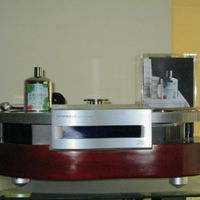






 Top Notes
Top Notes  Fig leaf
Fig leaf Lotus
Lotus Water hyacinth
Water hyacinth Parsley
Parsley Rose
Rose Heart Notes
Heart Notes  Fig milk
Fig milk Sweet acacia absolute
Sweet acacia absolute Jasmine sambac
Jasmine sambac Ylang-ylang
Ylang-ylang Frankincense
Frankincense Geranium
Geranium Iris
Iris Osmanthus absolute
Osmanthus absolute Base Notes
Base Notes  Heliotrope
Heliotrope Sandalwood
Sandalwood Vanilla
Vanilla Ambergris
Ambergris Cedarwood
Cedarwood Myrrh
Myrrh Styrax
Styrax Fir balsam absolute
Fir balsam absolute Haitian vetiver
Haitian vetiver Leather
Leather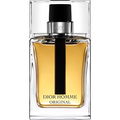
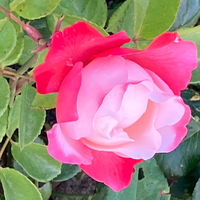



 Kurai
Kurai BoBoChamp
BoBoChamp

